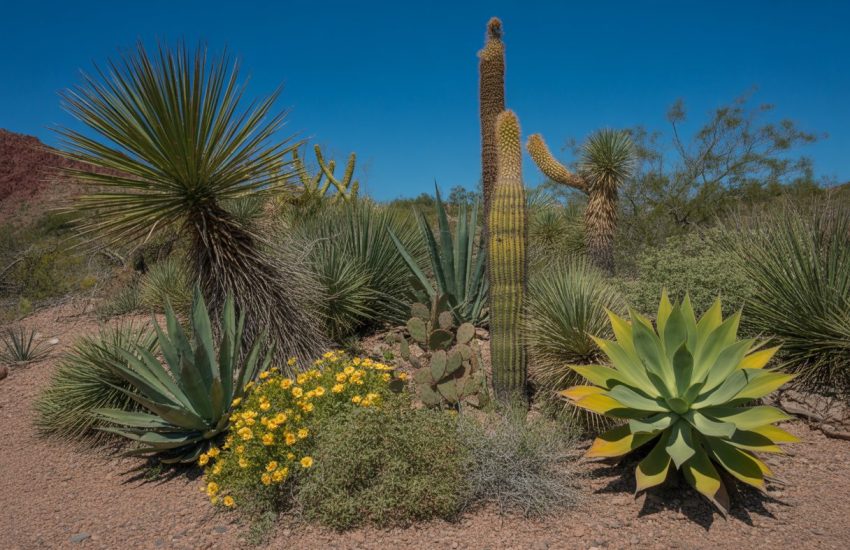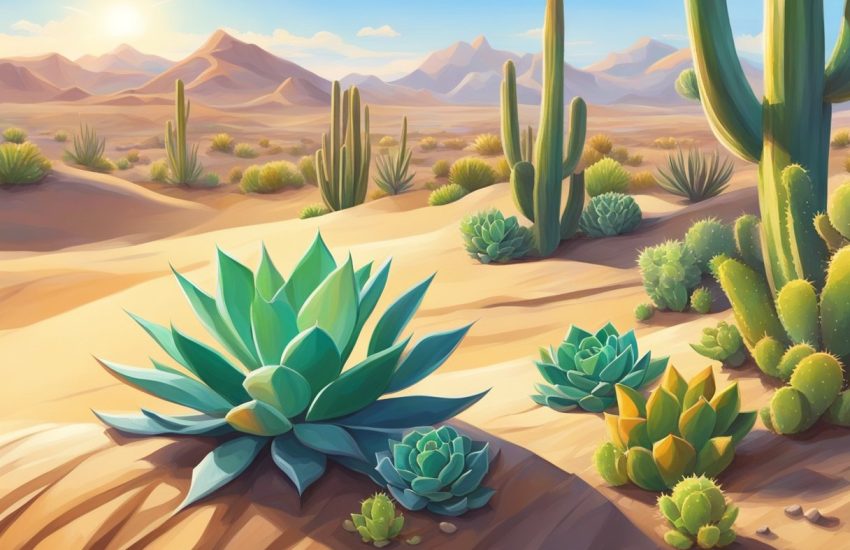Drought Tolerant Native Plants North Dakota for Sustainable Landscaping and Water Conservation
Drought-tolerant native plants are absolutely vital for sustainable landscaping in North Dakota’s dry climate. These plants have learned to survive with little water, so you won’t need to water as much and you’ll help conserve local water resources.
Choosing native species like purple coneflower, prairie dropseed, and western wheatgrass can make your garden tough and beautiful, even when drought hits.
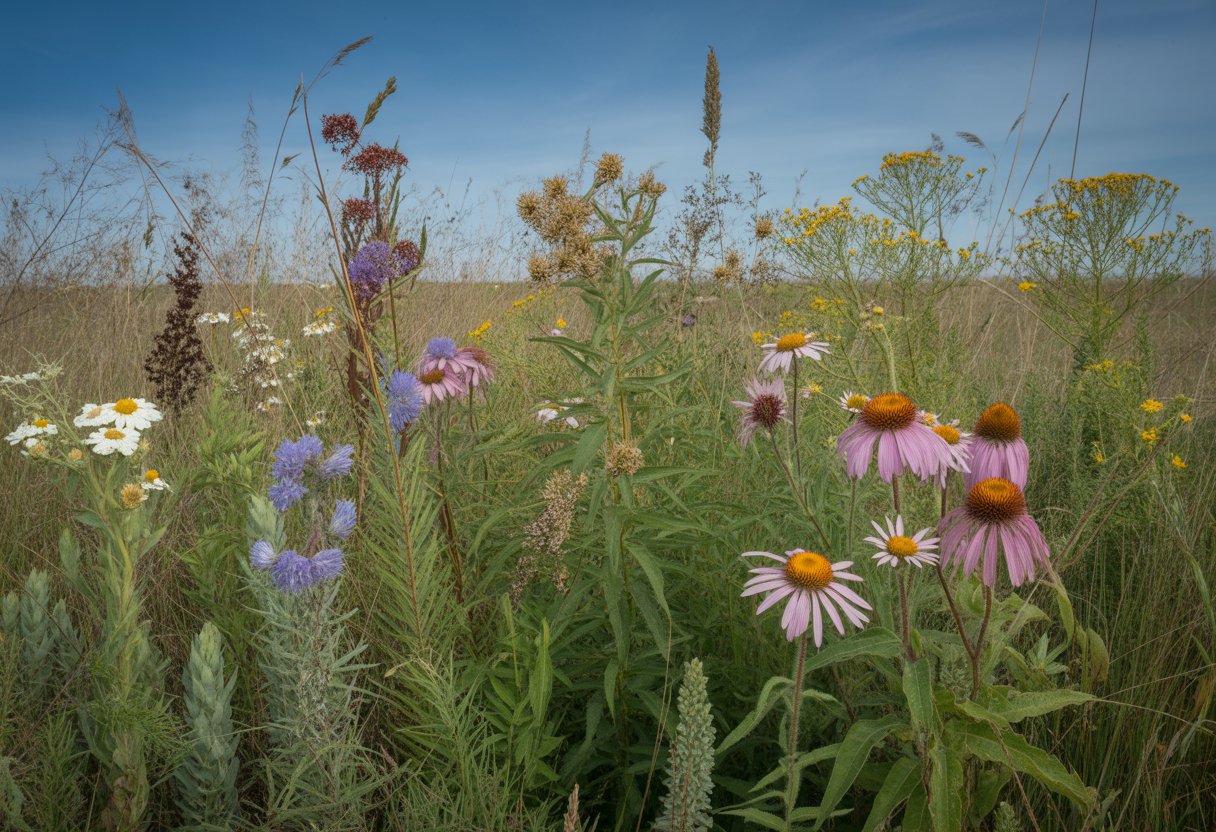
You’ll save water, but that’s not all—these plants support local wildlife and keep the soil healthy. Gardeners get lower maintenance costs, and the landscape keeps its natural beauty and stability.
Figuring out which native plants handle drought best can really boost your landscaping results. This info helps whether you’re a seasoned gardener or just starting out with North Dakota natives.
Understanding Drought Tolerant Native Plants of North Dakota
Drought-tolerant native plants in North Dakota keep local ecosystems going even when rain is scarce. They’ve adapted to the Great Plains and mixed-grass prairies, shaping plant diversity across different landscapes.
Defining Drought Tolerance
Drought tolerance means a plant can keep living and growing when water’s hard to come by. In North Dakota, these natives have tricks like deep roots, waxy leaves, and smaller leaf surfaces to hang onto moisture.
They get through long dry spells by managing water efficiently and keeping their metabolism running, even under stress. Unlike drought-avoidant plants, drought-tolerant species keep growing and reproducing during dry times without just shutting down.
Benefits to North Dakota Ecosystems
Drought-tolerant natives anchor the soil with their roots, stopping erosion in its tracks. They also give wildlife food and shelter when water’s scarce.
These plants help prairies bounce back after dry years by keeping vegetation cover steady. Their presence keeps nutrients cycling and helps ecosystems handle drought-driven problems.
Native Plant Communities and Distribution
You’ll mostly find drought-tolerant species in North Dakota’s mixed-grass prairies and parts of the Great Plains. Plant communities change depending on the region—river valleys, sandhills, upland prairies, you name it.
Common drought-adapted natives include blue grama, western wheatgrass, and prairie coneflower. Where they grow depends on soil, rainfall, and what people have done with the land in the past, so you get a mix that fits local conditions.
Key Drought Tolerant Native Plant Species in North Dakota
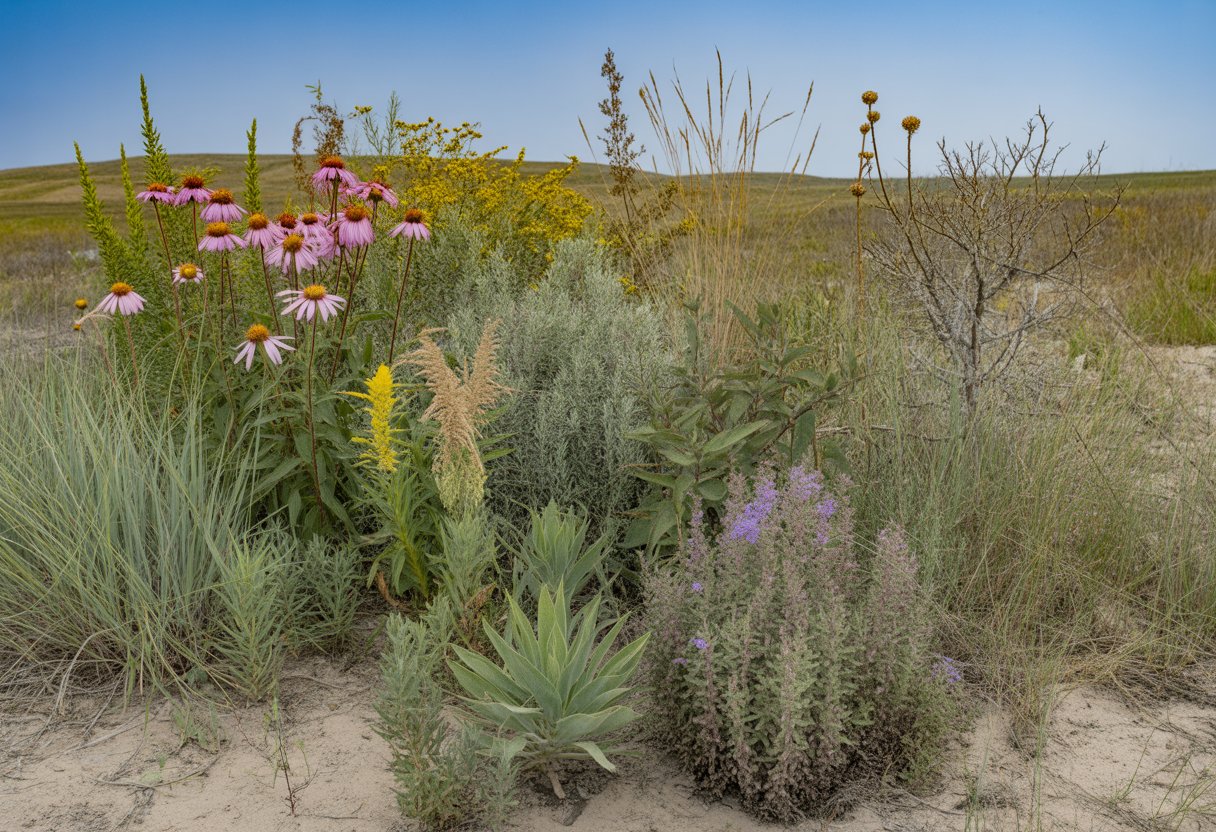
North Dakota has loads of native plants that handle drought with deep roots, smart water use, and the ability to thrive in dry soil. You’ll see tough grasses, flowering perennials, and small shrubs in prairies, rocky spots, and other habitats.
Grasses and Sedges
Big Bluestem (Andropogon gerardii) and Little Bluestem (Schizachyrium scoparium) stand tall in North Dakota’s prairies and shrug off drought. Their long roots grab moisture deep down and help hold the soil together.
Buffalo Grass (Bouteloua dactyloides) and Blue Grama (Bouteloua gracilis) grow low in open, dry areas. They handle drought by shrinking their leaves and sometimes going dormant when things get really tough.
Needleleaf Sedge (Carex filifolia) and Threadleaf Sedge love sandy or rocky soils. These sedges hold onto water and do fine in less fertile spots, keeping soil from blowing away.
Flowering Perennials
Threadleaf Coreopsis (Coreopsis verticillata) sports thin leaves that lose less water. Its bright yellow blooms draw pollinators and thrive in dry, well-drained soil.
Goldenrod (Solidago spp.) pops up just about anywhere, even in disturbed sites. Deep roots let it ride out dry stretches.
Scarlet Globemallow (Sphaeralcea coccinea) sticks to sandy or rocky spots. Its fuzzy leaves slow down water loss, and the orange flowers keep blooming through summer droughts.
Switchgrass (Panicum virgatum) grows tall and adapts to drought by changing its growth patterns to save water.
Shrubs and Small Deciduous Shrubs
Sagebrush (Artemisia spp.) dominates western North Dakota. The silvery leaves bounce sunlight away and keep moisture in.
Ribes species—think native currants and gooseberries—get through drought by going dormant and growing fuzzy leaves that hang onto water.
A lot of deciduous shrubs use deep roots and sometimes drop leaves for the season to survive dry spells but bounce back when the rain returns.
Notable Subspecies and Regional Occurrence
Some drought-tolerant plants have subspecies tuned to specific North Dakota habitats. For instance, Schizachyrium scoparium types differ between the east and the rocky west.
Sagebrush subspecies really take off in the northwest, near the Rocky Mountain foothills, where soil and moisture aren’t quite the same as the grasslands out east.
Needleleaf and Threadleaf Sedges pop up from dry prairies to rocky outcrops, thanks to their wide tolerance for tough conditions.
These regional quirks show how plants morph and time their growth to survive North Dakota’s wild swings in climate and soil.
Planting and Care for Drought Tolerant Native Plants
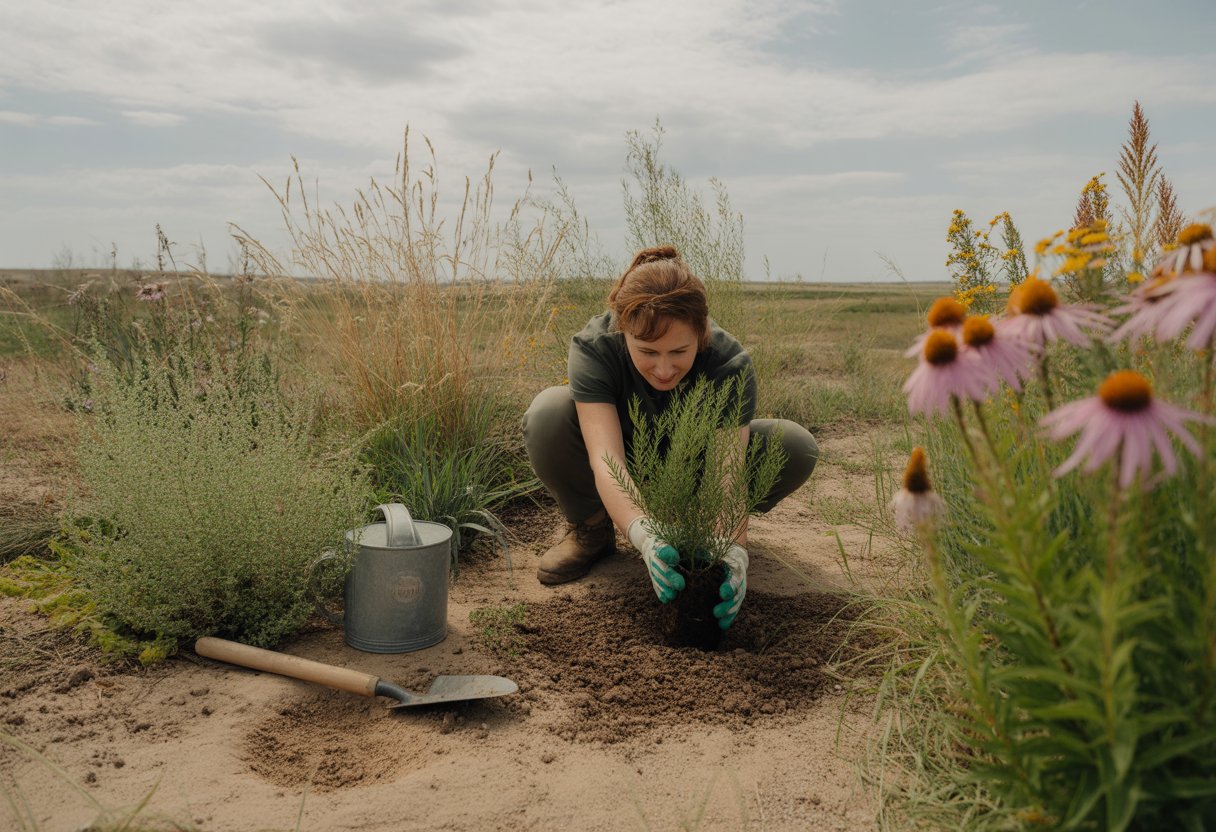
Getting drought-tolerant natives established takes a little planning—location, soil, and watering matter a lot. Good soil preparation and mulching help roots take hold. Maintenance like light pruning and propagation keeps them healthy and helps with erosion control.
Site Selection and Preparation
Pick a spot with well-draining soil. Most drought-tolerant natives like solonetz soils or sandy loams that don’t get soggy.
Steer clear of low areas where water pools. Some species handle partial shade, but most want full sun for best drought resistance.
Clear out weeds and loosen up the soil to help roots dig in. Soil tests can show if you need to tweak nutrients or pH.
Remove debris and weeds so new plants don’t have to fight for space. Plant in spring or fall—summer heat can be a killer for young plants.
Mulching and Soil Considerations
Spread 2–3 inches of organic mulch to keep moisture in and cut down on evaporation. Mulch also keeps soil temps steadier.
Don’t pile mulch against plant crowns or you’ll risk rot. In dry areas, mulch helps new plants settle in without needing a ton of water.
Go easy on fertilizer. Too much makes plants grow fast and lose their drought edge.
If your soil’s compacted, a little compost can help water soak in better, especially in solonetz soils.
Watering, Establishment, and Root Systems
Water new plants regularly for 6–12 weeks, but make it deep and infrequent. That way, roots grow down where the moisture is.
Once they’re established, most natives barely need extra water—maybe just during really long dry spells. Their roots reach deep for what they need.
Some moderately drought-tolerant plants might want a drink in extra dry seasons to stay healthy.
Check soil moisture a few inches down to see if watering’s needed.
Maintenance and Propagation Methods
Give native plants a little light pruning to take off dead stems and keep them bushy. This helps with erosion by keeping the ground covered.
You can propagate with seeds, dividing, or cuttings, depending on the plant. Gather seeds after the flowers fade, but make sure they’re ripe.
Some seeds need stratification—basically a cold period—to sprout. Divide plants in early spring or late fall when they’re dormant.
Cuttings root pretty fast if you take them in late spring and keep them humid and warm enough.
Keep an eye out for invasives and pull them up so your natives don’t get crowded out.
Ecological Significance and Management in North Dakota Landscapes
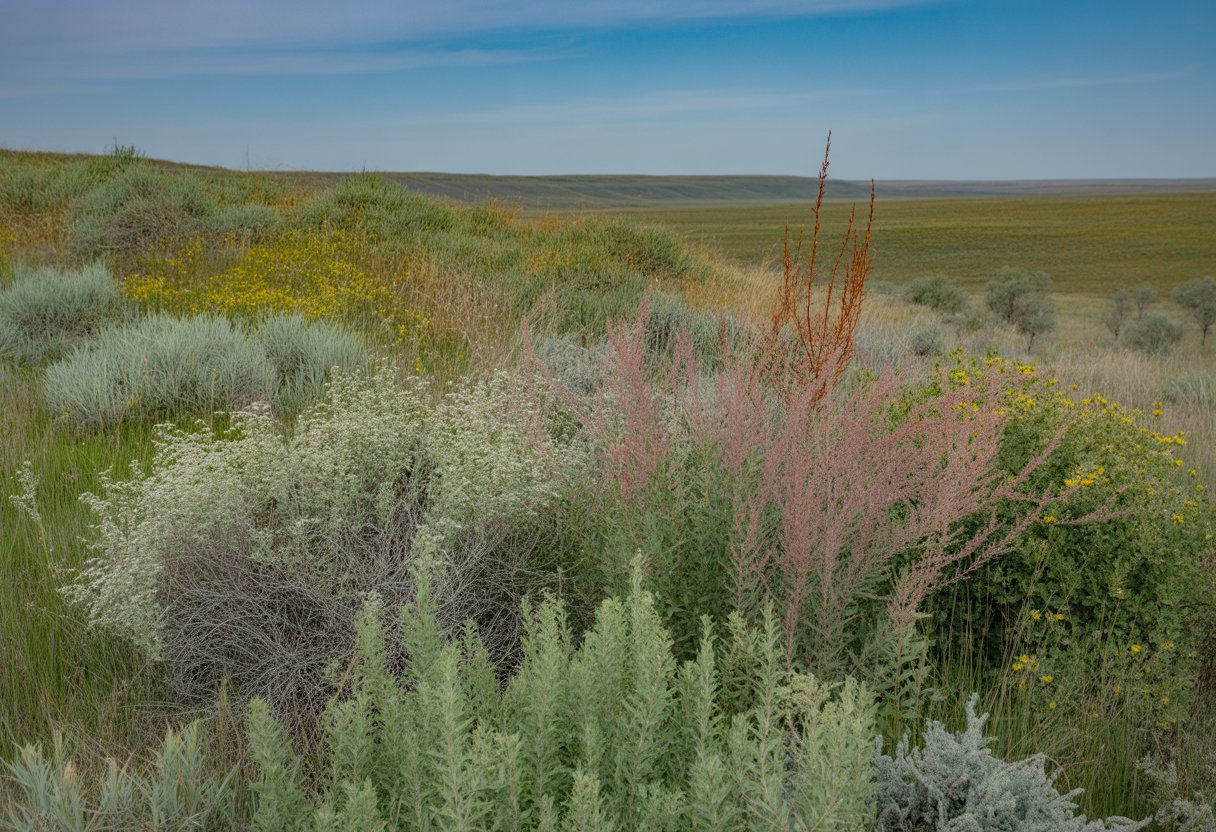
Drought-tolerant natives in North Dakota keep soil in place, support wildlife, and adapt to fire. Managing them ties in with conservation and legal protections all over the state.
Role in Erosion Control and Soil Health
Plants like Buffalograss and Purple Threeawn put down deep roots that hold soil, especially in the Missouri Plateau and Central Great Plains. Those roots add organic matter, which keeps nutrients moving.
They help maintain iron and copper in soils—key for healthy plant growth. Since they can handle drought, they keep ground covered and stop erosion, even near lakes or streams.
Grassland areas get the biggest boost from these species. With minimal irrigation and smart grazing, you can keep soil from degrading.
Wildlife Habitat and Biodiversity
Drought-tolerant natives offer habitat for pollinators, birds, and small mammals. Take Mountain Mahogany—it gives food and shelter, boosting biodiversity in the Northern Lakes and Forests.
They support a mix of species, so the ecosystem can ride out tough times. Seeds and leaves rich in Vitamin A give nutrition to wildlife, especially when drought hits.
Keeping a variety of native plants helps North Dakota’s ecosystems stay intact. Wildlife management plans often include these plants to connect habitats and build resilience.
Fire Ecology and Management Considerations
Fire naturally shapes North Dakota’s prairies. Big Bluestem and Switchgrass bounce back after low-intensity burns, which keep shrubs in check and recycle nutrients.
Burns can help drought-tolerant natives by clearing dead stuff and waking up seeds. But you’ve got to balance fire timing and strength so you don’t hurt the plants you want to keep.
Fire management here uses cover type and plant association maps to plan burns. Prescribed fires get scheduled to knock back invasives and help native plants recover, while keeping things safe near water and homes.
Legal Status and Conservation Efforts
A bunch of drought-tolerant natives fall under state and federal conservation programs. These programs try to keep prairies and wetlands from disappearing.
The Endangered Species Act gives rare taxa like Dakota Skipper habitat plants some real protection. It’s not perfect, but it does help.
North Dakota (ND) enforces rules on habitat disturbance, especially where conservation matters most. Agencies team up to keep land use sustainable and help native plants stick around.
Conservation groups work on seed banking and habitat restoration. Public awareness campaigns pop up too, usually focusing on species taxonomy and what these plants actually do in the ecosystem.
All these efforts help people follow environmental regulations. At the same time, they try to keep native landscapes healthy, even if it’s a constant challenge.

